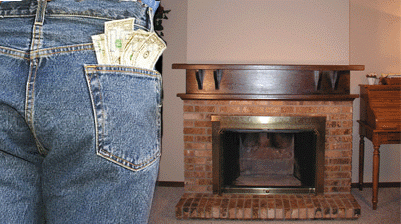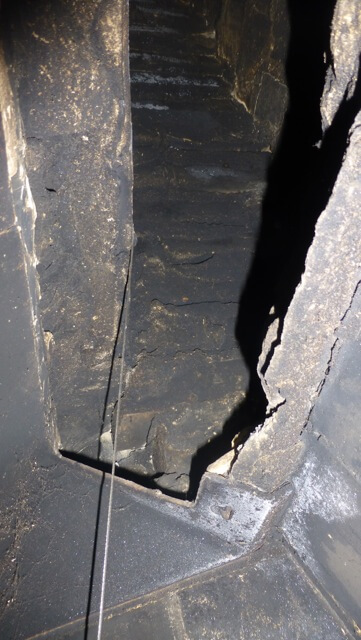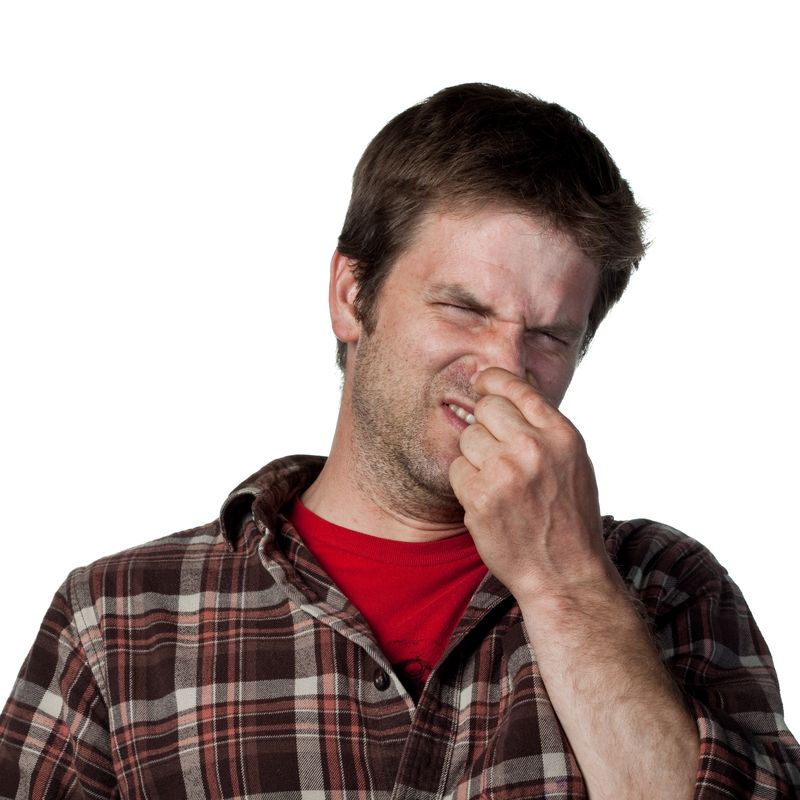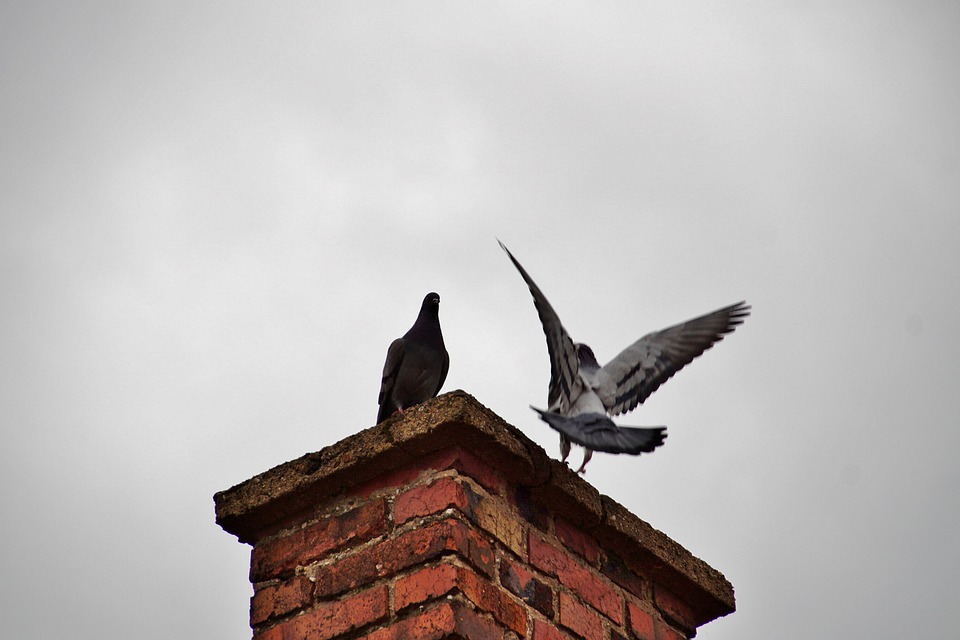
by Jason Raddenbach | Aug 29, 2017 | Chimney Problems
Fireplaces take more than they give. On a cold winter eve who of us is not tempted to go to the living room and stoke up a fire in the fireplace and read a book in front of the fire? You may be thinking “I am doing myself a favor by supplementing the furnace with additional heat”, but in fact you are making your house colder and could be contributing significantly to pollution depending upon how you burn.
The wood burning fireplace is a loosing proposition
The air action that a wood burning fireplace initiates in our home is wasteful. The moment the damper is opened heated air begins pouring out of the top of the chimney. As the fire in the hearth accelerates, the combustion process grabs already heated air from your home and burns the oxygen and combustible gasses in it. The heat that is created in this combustion quickly rises and grabs more heated inside air and tosses it up the chimney. You can restrict the amount of inside air that the fireplace has access to by installing glass doors, but this will also severely limit the amount of radiant heat that fireplace can cast forward into your living space. This radiant heat is the heat you feel on your skin in front of the fireplace, and is the only usable heat that the fireplace will produce since the combustion heat is pouring out the top of the chimney. In the meantime the home is drawing in cold outside air from other places (i.e. windows, light sockets, doors, etc) to replace the air that is escaping the home through the chimney. This is referred to as the “stack effect”.
Loosing heat even while dormant
Even while the wood fireplace is not being used, the traditional metal dampers tend to leak air since they warp and degrade rapidly in the extreme heat and corrosive soot environment. The removable and reusable Chimney Balloon fireplace chimney damper available in assorted sizes inflates into place in the flue and seals it off efficiently to stop heat loss and the cold draft.
The good, the bad, and the pollution
If you burn a fast hot fire this creates very little smoke and pollution, and it can give you a noticeable amount of radiant heat gain in the room the fireplace it is in. However it is using volume amounts of your already heated inside air for it combustion which exceeds your heat gain ratio. A slower fire is even worse since you are still loosing heated air out the chimney and getting very little radiant heat in return. This black type of fireplace smoke is a terrible pollutant and contributes to respiratory irritant for people with asthma and allergies.
Wood burning fireplaces are wonderful nostalgic centerpieces for many American homes. But a homeowner should be aware of the issues associated with fireplace use.
Sources:
US Department of Energy
WoodHeat.org
GreenBuildingElements.com

by Jason Raddenbach | Aug 28, 2017 | Chimney Problems
Some fireplaces have sharp edges
Q: Jason, Your customer service has been top notch, but I’m still not having good luck with the Chimney Balloon. I purchased one a year or two ago. Over time I noticed it had become deflated. I’ve not blown it back up a number of times in the past week. It must have a leak somewhere as it will not stay inflated. Do the valves develop leaks?
Anyway, I’m just a bit frustrated and wishing this worked better than it does. I’m not sure there’s anything to be done about it, but I needed to vent (no pun intended). – SR
A: Dear SR,
There are some applications that are just not hospitable to the Chimney Balloon. I’m afraid this may be one of those applications.
However, we have two products that are quite a bit more durable than the Chimney Balloon:
The Flueblocker is a dense wool pad with a rigid air barrier sewn inside it. Judging by your photos and the Chimney Balloon size you purchased before, my bet would be on the 13×35 Flueblocker. The length will be perfect, but you might have to trim a bit off the depth. I would try fitting it full sized first to see if it is a pressure fit, and then trim down from there if needed. Just like a haircut, you can always take more off, but you can’t glue it back on.
Another option is a Chimella. That would deploy up into your smoke chamber or flue tile. The Large Chimney Umbrella would cover either.
If you are having a hard time deciding on what one to go with, use our product selector tool to go step by step through your application. Or just give us a call.
– Jason

by Jason Raddenbach | Aug 4, 2017 | Chimney Problems
Q: In the Spring and Summer my fireplace sits unused and unloved. When it gets warm outside, and especially when it is raining, my fireplace smells like smoldering sweat socks! When I have visitors over the smell is embarrassing. I have tried every air freshener ever made, and it doesn’t help. How can I stop the stinky fireplace smell? – JO
A: Dear JO,
This is a very common problem. Before you invest in a 55 gallon drum of Febreeze, lets talk over what is causing it. In the spring and summer we close up our houses and start using the air conditioning. This gives your house limited access to outside air. When you turn on your bathroom fan or clothes dryer you start taking your inside air and you chuck it outside. This makes your home search for the path of least resistance to suck in air. Often that is through your loose and leaky fireplace damper.
Heat and humidity make ash and creosote acrid and stinky. Creosote is acidic and it releases a gas when it gets wet. So you have this stinky dirty snorkel tube (also known as a chimney) that you house is using to suck through, yuck!
Now that we know why the fireplace stinks, lets talk about steps to stop it:
- We have 3 types of chimney draft excluder plugs that work well to stop odors. The Chimney Balloon usually installs in the smoke shelf, The Flueblocker installs below the damper, and the Chimella installs in the upper smoke chamber or flue tile. Here is a link to an article that shows a diagram of where each product installs at.
- Once you have one of these products installed, you will shut off the flow of intake air through the chimney, and your house will be forced to find another location to draw air from.
- If it has been more than a year since your last chimney cleaning, you may want to have it looked at by a CSIA certified Chimney Sweep. But be forewarned, that a scrubbing and cleaning will often make the chimney odor stronger just after cleaning. So make sure you get your chimney plug right back in after the chimney sweep has done his thing. *
* Some Chimney Sweeps put a hard sell on you to put a top seal damper on your flue. They run anywhere from $650 to over $1000 installed. We have another blog post about top seal dampers.

by Jason Raddenbach | Aug 10, 2010 | Chimney Problems
[vc_row css_animation=”” row_type=”row” use_row_as_full_screen_section=”no” type=”full_width” angled_section=”no” text_align=”left” background_image_as_pattern=”without_pattern”][vc_column][vc_row_inner row_type=”row” type=”full_width” text_align=”left” css_animation=””][vc_column_inner width=”1/4″][vc_single_image image=”1897″ img_size=”full” alignment=”center” onclick=”link_image” qode_css_animation=””][vc_column_text el_class=”.caption” css=”.vc_custom_1504030170436{padding-top: 10px !important;padding-bottom: 30px !important;}”]Birds love to congregate on chimney tops.[/vc_column_text][/vc_column_inner][vc_column_inner width=”3/4″][vc_column_text el_class=”.underlinelink , .blackh3″]Q: Is there a way to stop noises from coming down the chimney? Throughout the year we get a lot of pigeons who like to sit on the chimney and make a ruckus. Thanks much- EJ
A: Noisy pigeons and Chimney Swifts can be really annoying. Unfortunately, birds like the acoustics of chimneys and the warm air that emits from them. So they tend to host a variety show right there on the top of your chimney.
Of the products we offer the Chimney Balloon and the Flueblocker both do a very nice job acting as a sound barrier to keep that noise out. Since the Chimney Balloon is filled with air, it does a nice job bouncing and absorbing sound waves. Likewise, the wool pad of the Flueblocker absorbs sound waves.
However, Since you are dealing with birds, I need to mention something else. If you don’t have a cap on the chimney top with a screen on it, you will want to consider that. Those birds also tend to use the chimney crown as a “Pigeon Potty”, and you don’t want that kind of bacteria deposit in your chimney. – Jason[/vc_column_text][/vc_column_inner][/vc_row_inner][vc_empty_space][/vc_column][/vc_row]

by Jason Raddenbach | Oct 8, 2009 | Press
BobVilla.com talks about Chimney Balloons.
BobVilla.com wrote a fantastic article including Chimney Balloons and other energy saving measures that really add up to make a difference in home energy costs.
“The chimney can be the number one source of heat loss in a house. Use a Chimney Balloon to prevent drafts from flowing through your chimney and prevents heat from escaping. Cost: $55 per fireplace” Read the rest of the article here…
BTW, Notice that Bob (in the picture to the left) is holding one of our favorite chimney tools…a folding carpenters ruler! Way to go Bob!




